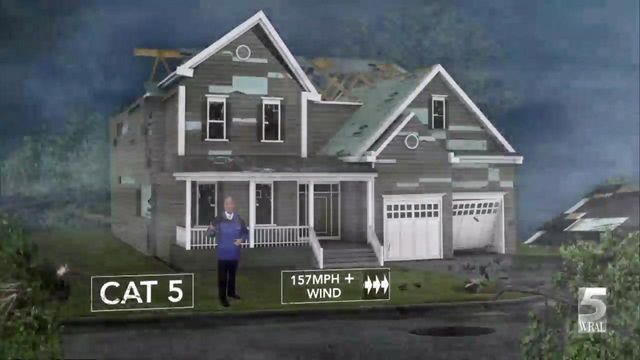Following deadly 2017 hurricane season, new tools help meteorologists prepare for storms
Following a brutal 2017 hurricane season, the National Hurricane Center has announced new forecasting tools that will help better predict storms.
Beginning this year, the National Hurricane Center will issue advisories five days in advance instead of two days ahead of time. The advisories include pertinent information about a storm, including winds, storm surge and location. This will give emergency managers and the public more advance warning on a storm’s possible track and intensity.
Another big change will be adjustments to hurricane track maps. The maps include what is known as the "cone of uncertainty," which represents the probable track of the center of the storm.
This year, the cone will be smaller, which will give meteorologists a better idea of where the storm is headed. Forecasters are able to shrink the cone because the accuracy of forecasts is improving.
Also this year, experimental wind forecasts have become official. Those forecasts will help people know when the winds will pick up so they can prepare. Many preparations become difficult or dangerous once winds reach tropical-storm force.
The new maps will show the earliest time the winds could arrive as well as the most likely times.
How much damage will a hurricane do to my home?
The wind maps are important, as the strength of a hurricane is determined by wind speed, and meteorologists can predict what kind of damage a storm will do based on how strong the winds will be.
The damage from a Category 1 storm (sustained winds of 74 to 95 mph) is fairly minimal, with shingles coming off homes and tree limbs bending.
Winds with a Category 2 storm (96-110 mph) will cause more extensive damage. Siding can be pulled away from homes, flying debris can break windows and trees will bend significantly.
A Category 3 storm can cause the door of a house to blow in because of strong winds (111-129 mph). The roof will likely begin to flap up and down and some trees begin to fall.
A Category 4 storm (sustained winds of 130-156 mph) will cause even worse damage. Most of the trees will begin to fall, almost all of the windows on a home will break and most of the roof shingles will fly away.
Once a storm reaches Category 5 status (winds of 157 mph or higher), there will be catastrophic damage. The shingles on a roof will be completely torn off, holes will form in the roof and walls begin to fall. No trees remain standing when winds reach Category 5 status.
2017 was costliest hurricane season on record
There were 17 named storms in the 2017 season, including three hurricanes that devastated many communities within a month.
In August, Hurricane Harvey rapidly intensified into a Category 4 hurricane in the Gulf of Mexico and made landfall along the Texas coast. It stalled for days, dropping historic amounts of rainfall in the state.
Some parts of Houston saw 55 inches of rain, and a recent report said more rain fell over that five-day period than at any other time since records have been kept. At least 68 people died as a direct result of the storm and more than 300,000 structures were flooded.
Harvey caused $125 billion in damage, making it the second costliest storm in U.S. history, after Hurricane Katrina.
Two weeks later, Hurricane Irma reached Category 5 intensity as it moved across the Caribbean. It devastated several islands before taking aim at Florida, where it ripped through the Keys and left a path of destruction as it moved inland.
About 6 million people in Florida evacuated from coastal areas, and Irma cut power to more than 6 million customers.
The storm, which was one of the most powerful hurricanes ever recorded in the Atlantic, caused 47 direct deaths and an additional 82 indirect deaths.
Two weeks after Irma, Puerto Rico braced for a devastating blow from Hurricane Maria. The storm first ravaged the island of Dominica at Category 5 status before making landfall in Puerto Rico.
Maria destroyed the power grid on the island and left almost all of Puerto Rico in darkness. Some still remain without power.
The death toll in Puerto Rico as a result of the storm is uncertain. The official count stands at 64, but Harvard researchers estimate at least 4,600 people died because of little access to power or medical care during the storm’s aftermath.
Government officials estimate the three storms caused a combined $265 billion in damage, making 2017 the costliest hurricane season on record.
Maria cost $90 billion while Irma cost $50 billion.











